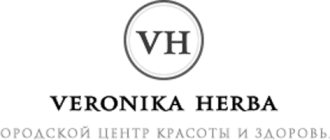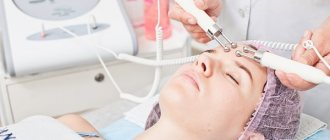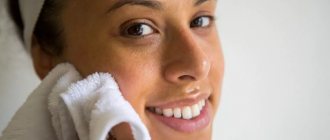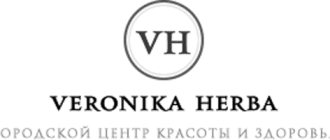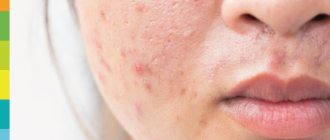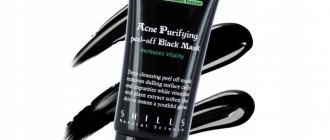From this article you will learn:
- What is a glycolic facial peel?
- How is glycolic facial peeling performed in beauty salons?
- What is glycolic facial peeling like?
- What are the indications and contraindications for glycolic facial peeling?
- What are the advantages and disadvantages of glycolic facial peels?
- What side effects can you expect after a glycolic facial peel?
- How often can you do a glycolic facial peel?
- How much does glycolic facial peeling cost in beauty salons?
- How to make a glycolic facial peel at home
- How to do glycolic facial peeling at home step by step
Recently, acid peeling has been in great demand. This cosmetic procedure has many advantages: it tightens and rejuvenates the skin, reduces visible wrinkles, freckles and age spots. Acid peels are performed in professional salons, but today some of them can be done at home without the help of specialists. In our article we will tell you what glycolic facial peeling is, consider the benefits of this procedure, and introduce you to the rules of skin care after it.
What is a glycolic facial peel?
This chemical facial peel is performed with glycolic acid. Previously, this acid was made from sugar cane. Now the production is based only on artificial drugs. The solution affects the topmost layer of skin (epidermis). Fruit acid kills old cells while stimulating the functioning of others at deeper levels. Thanks to this, we observe a noticeable rejuvenation effect. The face acquires a healthy color and becomes fresher. The condition of the skin improves.
Let us repeat that glycolic acid belongs to fruits. In nature, it can be found in sugar cane and unripe grapes. Thanks to its composition, it is able to quickly penetrate the skin, activating rejuvenation processes.
Glycolic peeling for the face at home involves treating the skin with a special composition containing acid. During the procedure, dead skin cells, impurities, and toxins are removed.
Under the influence of the solution the following occurs:
- collagen production;
- stimulation of skin cell regeneration;
- activation of internal processes in the body;
- cleansing the upper layers of the epidermis;
- decreased sebum production;
- reduction of wrinkles;
- skin protection from ultraviolet radiation;
- moisturizing the skin;
- increasing skin tone;
- reducing the visibility of age spots;
- reducing the number of acne.
During peeling, the top layer of skin is affected. The destruction of dead cells provokes the production of natural collagen. Due to this, skin renewal and regeneration occurs. The first visible effect is noticeable a couple of hours after the procedure.
Read the material on the topic: Chemical peeling of the face: your skin will breathe a new breath!
Preparation[edit]
Glycolic acid can be synthesized in a variety of ways. Predominant approaches use the catalytic reaction of formaldehyde with synthesis gas (formaldehyde carbonylation) due to its low cost. [8]
It is also prepared by reacting chloroacetic acid with sodium hydroxide, followed by re-acidification.
Other methods not notably used include hydrogenation from oxalic acid, and hydrolysis to cyanohydrin, derived from formaldehyde. [9] Some of today's glycolic acids do not contain formic acid. Glycolic acid can be isolated from natural sources such as sugar cane, sugar beets, pineapple, melon and unripe grapes. [10]
Glycolic acid can also be produced through an enzymatic biochemical process, which may require less energy. [eleven]
How is glycolic facial peeling performed in beauty salons?
- Preparation.
If you are doing a glycolic peel for the first time, you need to prepare your skin in advance for the effects of the active substance. To do this, apply products with one of the acids to your face every evening: citric, mandelic or glycolic. Almond is weaker than the others, so it can be safely used to treat sensitive skin.
- Peeling.
The procedure begins with cleansing the skin of impurities and cosmetics. Next, the specialist proceeds directly to peeling. The acid is applied to the forehead, chin, nose and cheeks. The area around the eyes should remain untouched.
The exposure time of the drug ranges from 2 to 15 minutes. The exact period should be selected by a cosmetologist, taking into account the sensitivity of the epidermis and the concentration of acid in the chosen product. During the procedure, you must carefully monitor the skin's reaction. If redness, itching and burning begin, a specialist should remove the mixture.
Glycolic facial peeling is removed with a neutralizer. After this, the skin should be rinsed with cold water and a nourishing mask should be applied.
- Recovery phase.
A nourishing mask after the procedure is enough for the skin to recover. However, if desired, you can use a sedative. Choose formulations with wheat oil, jojoba oil or grape seed extract.
To avoid negative consequences from the procedure, follow the following rules for further skin care:
- During the recovery period, you should stop using decorative cosmetics.
- It is also recommended to avoid visiting baths and saunas.
- To ensure that glycolic acid facial peeling gives the desired effect without skin irritation, apply a strong sunscreen before sun exposure.
Read material on the topic: Fruit peeling: in a beauty salon and at home
Features of using cosmetics with glycolic acid for different skin types
- For oily problem and combination skin Oily and problem skin types respond well to any products with glycolic acid on a daily basis. Anti-inflammatory and sebum-regulating products containing the component at the base of the formula have a keratolytic and renewing effect without dehydrating the epidermis. Also look for glycerin, hyaluronic acid, niacinamide, salicylic acid, or lipo-hydroxy acid in products for maximum results. The complex of salicylic and lipo-hydroxy acids can be used without the addition of LHA acids, as, for example, in the formula of Effaclar mattifying lotion.
- For dry and sensitive skin To achieve a light exfoliation effect without skin irritation, use a glycolic acid skin cream with a concentration of up to 5%. For sensitive skin, choose tonics or lotions with low content (up to 3%) 3-4 times a week. Formulas with a combination of acid, niacinamide, squalane, thermal water, and hyaluronic acid are also suitable to prevent skin irritation. If irritation or allergies occur, switch to a product with a lower content of the substance or stop using it altogether.
- For normal and mature To care for mature skin with visible signs of aging, you can use a complex of acids in the formula, such as BHA and AHA acids. Professional peelings with a high content of alpha hydroxy acid will help to intensively renew the epidermis. Creams, gels, tonics, and cleansers with a low component content are suitable as a regular beauty routine.
Types of glycolic peeling for the face
There are two types of glycolic peeling:
- surface (with acid content less than 40%);
- aggressive (composed of 40–70% acid).
How are these two procedures different?
- Superficial peeling.
During the session, the upper layers of the epidermis are affected. Recovery is accompanied by redness of the skin. This is normal and traces should disappear after 48 hours. It is convenient to perform such a glycolic peel a few days before an important event.
- Aggressive peeling.
It affects the deeper layers of the skin, eliminating the problem of acne and post-acne and reducing pigmentation. This glycolic facial peel is suitable for women 30 years and older. After the procedure, pain, peeling and hyperemia are possible.
Recommended articles on the topic:
- How to properly care for your skin
- How to remove wrinkles on the face: the most effective methods
- Microcurrent facial therapy is a beneficial treatment for your skin
Indications and contraindications for glycolic facial peeling
Professionals say that this peeling option is indicated for:
- preparation for plastic surgery or other complex beauty procedures;
- significant pigmentation, acne, pimples, post-acne, comedones;
- the presence of small wrinkles, folds and other age-related changes;
- ingrown hair problem;
- hyperkeratosis;
- dry skin;
- presence of large pores on the face;
- deep acne scars;
- scars, stretch marks;
- molluscum contagiosum.
Glycolic peeling for the face is a completely safe procedure, but experts advise paying attention to contraindications.
It cannot be done in the following cases:
- In spring or summer.
- If you are pregnant or breastfeeding.
- If there are warts in the area of the face where peeling is planned.
- With herpetic disease in the acute stage.
- With telangiectasia.
- If you have recently been in the sun for a long time or have been tanning.
- If there are wounds, scratches, or inflammation at the site of the intended peeling.
- Brunettes with dark skin and dark eyes.
- If you suffer from intolerance to one of the elements of the mixture. To ensure that glycolic facial peeling does not have negative consequences for the skin and the body as a whole, do an allergy test before the procedure.
- For rosacea.
- After chemotherapy or hormonal therapy.
- For severe photosensitivity of the skin.
- After microdermabrasion treatment.
- For vascular problems.
- After recent hair removal.
- When using retinoids.
Read material on the topic: Almond peeling for the face: features of the procedure
Advantages and disadvantages of glycolic peeling for the face
Pros of glycolic peeling:
- The first effect will be noticeable within a few hours after the procedure.
- Rapid restoration of facial skin.
- Solves many problems: stops aging, eliminates various defects, unevenness, wrinkles. Facial rejuvenation occurs.
In the photo below you can compare your face before and after glycolic peeling.
Disadvantages of the procedure:
- After the session, peeling and redness of the skin is possible. Their duration ranges from several hours to a couple of days.
- More significant consequences are swelling and the appearance of crusts on the face. You should consult a cosmetologist about treatment.
- In rare cases, the effect of glycolic peeling does not occur.
- High price for a one-time session.
- Some girls complain that after the procedure, skin pigmentation and other serious abnormalities begin.
Reviews of facial peeling with glycolic acid can be found on the Internet.
Read material on the topic: Depigmenting peeling: everything you wanted to know about it
History[edit]
The name "glycolic acid" was coined in 1848 by the French chemist Auguste Laurent (1807–1853). He suggested that the amino acid glycine, which was then called glycocol,
could be the amine of a hypothetical acid, which he called "glycolic acid" (
acide glycolique
). [5]
Glycolic acid was first prepared in 1851 by German chemist Adolf Strecker (1822–1871) and Russian chemist Nikolai Nikolaevich Sokolov (1826–1877). They obtain it by treating hippuric acid with nitric acid and nitrogen dioxide to form an ester of benzoic acid and glycolic acid (C6H5C(=O)OCH2COOH), which they called "benzoglycolic acid" ( Benzoglykolsäure
;
also benzoyl glycolic acid). They boiled the ether for several days with dilute sulfuric acid, thus obtaining benzoic acid and glycolic acid ( Glykolsäure
). [6][7]
Side effects of glycolic facial peels
The glycolic facial peel procedure may bring some side effects and complications. Usually, negative consequences arise if a low-quality drug was used, as well as if the choice of exposure time for the product was unsuccessful.
Possible problems:
- Swelling of the skin.
This phenomenon becomes noticeable a few hours after peeling. The swelling should go away on its own, but in the future you should perform the procedure more carefully.
- Burns.
Symptoms include severe burning of the skin and significant redness. To solve the problem, wash your face with cold water and apply a soothing cream.
- Allergic reaction.
Glycolic facial peels may cause an allergic reaction. To avoid this, take a test in advance to identify intolerance to the elements of the drug. The test is as follows: a little acid is placed on the bend of the elbow or wrist and left for 7-10 minutes.
You are allergic if you experience:
- burning;
- redness;
- swelling and itching at the site of exposure to the solution.
If you have at least one of the listed symptoms, this procedure cannot be done.
- Dark spots.
If you are prone to pigmentation, peeling may cause dark spots to appear.
- Dryness.
Negative consequences such as dryness and flaking are also possible. If your skin is prone to this, you should reduce the acid concentration, and after the procedure, generously lubricate your face with moisturizer.
If you are unsure whether to do a glycolic peel, look at photos and reviews about the procedure on the Internet.
Read material on the topic: Retinoic yellow peeling done by Hollywood stars
How much does glycolic facial peeling cost in beauty salons?
The cost of one procedure is 1500–5000 rubles. It depends on the price at which glycolic acid is purchased for facial peeling, as well as on the level of the establishment and the qualifications of the specialist. The total cost of the course is at least 7,500 rubles.
Such a high price for glycolic facial peeling is fully justified by the good results that clients receive.
Before going to the doctor, be sure to evaluate the quality of the clinic based on reviews from previous visitors. For those who are not ready to trust doctors, there is a way to do the peeling yourself.
Read the material on the topic: Ultrasonic peeling of facial skin - a pleasant and beneficial procedure for your skin
How to make a glycolic facial peel at home
Before you begin the home procedure, you will need to purchase the following products:
- degreasing lotion;
- soothing cream;
- peeling agent;
- rich cream to moisturize the skin.
You need to buy glycolic acid for facial peeling (with a concentration of 30%). If you are doing the procedure for the first time, you should choose less concentrated formulations. Large amounts of acid can damage the skin, causing irritation and other problems. The increase in the percentage of active ingredient in the drug should be gradual. The first peeling lasts no more than one minute.
You don’t have to buy a ready-made product at the pharmacy, but make it at home from natural ingredients.
You will need:
- a tablespoon of cane sugar;
- freshly squeezed lemon juice;
- half a glass of mineral water.
All products must be mixed together until smooth. The solution should have the consistency of syrup. Gently apply the mixture to the skin using your fingertips. Then wait 7-10 minutes and wash it off with warm water. This mask is suitable for more frequent use than regular glycolic peeling. The optimal time interval between procedures is 3-4 days. In total you will need to complete 10–12 sessions. In the future, you will be able to determine how long you need to keep the mask on your skin for maximum results.
Before the procedure, we advise you to study reviews from cosmetologists about glycolic facial peeling at home, the process itself, and the rules for choosing products at the pharmacy.
Read material on the topic: Gas-liquid skin peeling - beauty without pain and injections
Links[edit]
- US National Library of Medicine "Glycolic Acid" in TOXNET Hazardous Substances Data Bank (HSDB), citing Gerhartz, W. (Ed.), Ullmann's Encyclopedia of Industrial Chemistry. 5th ed. Volume A1: Deerfield Beach, FL: VCH Publishing, 1985 to Present, pp. BA13 509.
- "DuPont Glycolic Acid Technical Information". Archived from the original on 2006-07-14. Retrieved July 6, 2006.
- "Glycolic acid_msds".
- "Glycolic Acid MSDS". University of Akron. Retrieved September 18, 2006.[ permanent dead link
] - Laurent, Auguste (1848). "Sur les acides amidés et le sucre de gélatine" ("On the aminated acids and sugar of gelatin [i.e. glycine]"), Annales de Chimie et de Physique
, 3rd series,
23
: 110–123.
From paragraph 112: “ Appelons ce dernier
acide glycolique
...
” (“Let’s call the latter “glycolic acid” ...”) - Sokoloff, Nikolaus and Strecker, Adolf (1851) "Untersuchung einiger aus der Hippursäure entstehenden Producte" ("Investigation of some products which arise from hippuric acid"), Annalen der Chemie und Pharmacie
,
80
: 17–43. For their production of glycolic acid, see p. 34–37. Note: Strecker and Sokolow's empirical formula for glycolic acid (namely C4H4O6) was incorrect because, like many chemists of the time, they used the wrong atomic masses for carbon (6 instead of 12) and oxygen (8 instead of 16). - (Socoloff and Strecker, 1851), p. 37. In recognition of the correctness of Laurent's assumption, Strecker and Sokolov named glycolic acid: “Die in dem Barytsalz enthaltene Säure C 4 H 3 O 5 or Säurehydrat gedacht C 4 H 4 O 6 kommt mit der Säure überein, als deren Amidverbindung man das.
Glycocoll betrachten kann, und welche daher von Laurent den Namen Glycolsäure
erhalten hat.”
(The acid C 4 H 3 O 5 contained in the barium salt or considered as the hydrate of the acid C 4 H 4 O 6 is consistent with an acid whose amide can be considered a glycocol, and therefore received the name “glycolic acid” from Laurent.) - DJ Loder, US Patent 2152852 (1939).
- ^ab Karlheinz Miltenberger "Hydroxycarboxylic acids, aliphatic" in Ullmann's Encyclopedia of Industrial Chemistry, Wiley-VCH, Weinheim, 2005.
- “Glycolic acid, what is glycolic acid? About its science, chemistry and structure". www.3dchem.com
. Retrieved April 11, 2022. - Thaipolychemicals
- Siegel, Astrid; Operschall, Bert P.; Siegel, Helmut (2017). "Chapter 11. Complex formation of lead(II) with nucleotides and their constituents." In Astrid, S.; Helmut, S.; Siegel, RKO (ed.). Lead: Its Impact on the Environment and Health
.
Metal ions in life sciences. 17
. de Gruyter. pp. 319–402. DOI: 10.1515/9783110434330-011. PMID 28731304. - https://www2.dupont.com/Glycolic_Acid/en_US/uses_apps/industrial/ind_pgs/leather_tanning.html
- thefreedictionary.com
- GEREA, ALEXANDRA (2017-04-03). "New Protein Could Boost Yields, Save Farmers Millions Every Year". ZME Science
. Retrieved April 6, 2022. - South, Paul F.; Walker, Berkeley J.; Cavanagh, Amanda P.; Rolland, Vivien; Badger, Murray; Orth, Donald R. (March 28, 2022). "Bile acid sodium symporter BASS6 can transport glycolate and is involved in photorespiratory metabolism in Arabidopsis thaliana". Plant cell
.
29
(4):808–823. DOI: 10.1105/tpc.16.00775. ISSN 1532-298X. PMC 5435425. PMID 28351992. - "Glycolic Acid MSDS". ICSC: NENG1537 International Chemical Safety Cards (WHO/IPCS/ILO)
. CDC/NIOSH. Retrieved June 8, 2006.
Stages of glycolic facial peeling at home
Homemade facial peeling is performed in five stages:
- Skin cleansing.
First, you need to remove all cosmetics from the surface of your face and wipe your skin with a degreasing lotion. Dirty skin interferes with the acid's effects.
- Application of the product.
You can apply the peeling agent with a regular cotton pad. The sequence is as follows: forehead, nose, cheeks, chin. Avoid the area around the eyes and lips. Glycolic facial peeling lasts up to 5 minutes. If itching and excessive burning of the skin begin, redness and swelling have formed, the procedure must be completed.
- Neutralization.
Next, a slightly alkaline solution (neutralizer) is used. Dip a cotton pad into it and wipe the skin thoroughly.
- Completion of the procedure.
Wash your face with cold water. Salon procedures are performed using special solutions, but we can assure you that clean running water works just as well. This stage is performed to restore the water-salt balance of the skin, as well as to eliminate dryness and flaking.
- Soothing care.
Glycolic facial peeling is completed with the application of a moisturizing mask. Over the next few days, moisturize your skin generously with creams. During the recovery period, refrain from using decorative cosmetics.
During the course of glycolic peeling, exclude solarium, bathhouse and sauna. High temperatures can provoke negative consequences.
Each glycolic facial peeling session should be completed with a soothing compress. To prepare it, it is better to use natural ingredients (medicinal herbs). For example, to prepare a solution with celandine, pour boiling water over it and put on fire (for 5–7 minutes). Wait for the broth to cool down. Place the resulting paste on the skin and leave for 20 minutes.
You can also make a decoction of green tea, which is prepared according to the same principle as the celandine solution.
Read material on the topic: How to care for facial skin: home care and salon treatments
Beneficial features
Four properties of this substance are especially beneficial for the skin.
Exfoliating property
Glycolic acid is an excellent exfoliant. The structure of the molecule is such that the component actively dissolves the intercellular fluid and reduces the pH in the stratum corneum, as a result of which dead skin particles are easily separated and the process of cellular renewal is accelerated. This glycolic peeling makes the skin smooth, fresh and radiant, evens out the texture, makes pigmentation and fine wrinkles almost invisible.
For those with sensitive skin prone to dryness, it is important that the effect of glycolic acid on the skin is more gentle than peelings and scrubs with abrasive particles. And the acid is distributed more evenly, leaving no untreated areas of the dermis.
Structure of the glycolic acid molecule
Moisturizing property
One of the most important properties of many cosmetic products is the ability to moisturize the skin and replenish the level of nutrients in all its layers. A positive feature of glycolic acid is an increase in the content of hyaluron in the skin, in turn, each hyaluronic acid molecule is capable of retaining a significant amount of moisture.
Lightening and correction of skin texture
The ability of the skin to self-clean and renew itself under the influence of glycolic acid molecules is actively used to correct post-acne scars, narrow pores and get rid of pigmentation. Glycolic acid can be found in most lightening cosmetic products.
Lightening skin with glycolic mask
Anti-aging effect
No less important for aging skin is the anti-aging effect of glycolic acid. Cosmetological studies over the years have confirmed that glycol has the ability to increase collagen production by the skin. Regular exposure to glycolic acid will make the skin elastic and youthful, eliminating fine wrinkles.
Where to sign up for glycolic facial peeling in Moscow
Nowadays, you no longer have to spend a lot of time performing complex and unpleasant procedures at home. It is much easier to seek help from real professionals - the Veronika Herba beauty and health center, equipped with effective and modern equipment.
Why clients choose Veronika Herba Beauty and Health Center:
- This is a beauty center where you can take care of yourself at a reasonable cost, while your face and/or body will be treated not by an ordinary cosmetologist, but by one of the best dermatologists in Moscow. This is a completely different, higher level of service!
- You can receive qualified help at any time convenient for you. The beauty center is open from 9:00 to 21:00, seven days a week. The main thing is to agree with your doctor in advance on the date and time of your appointment.
Sign up for a consultation with a specialist by phone +7 (495) 085-15-13
, and you will see for yourself!


